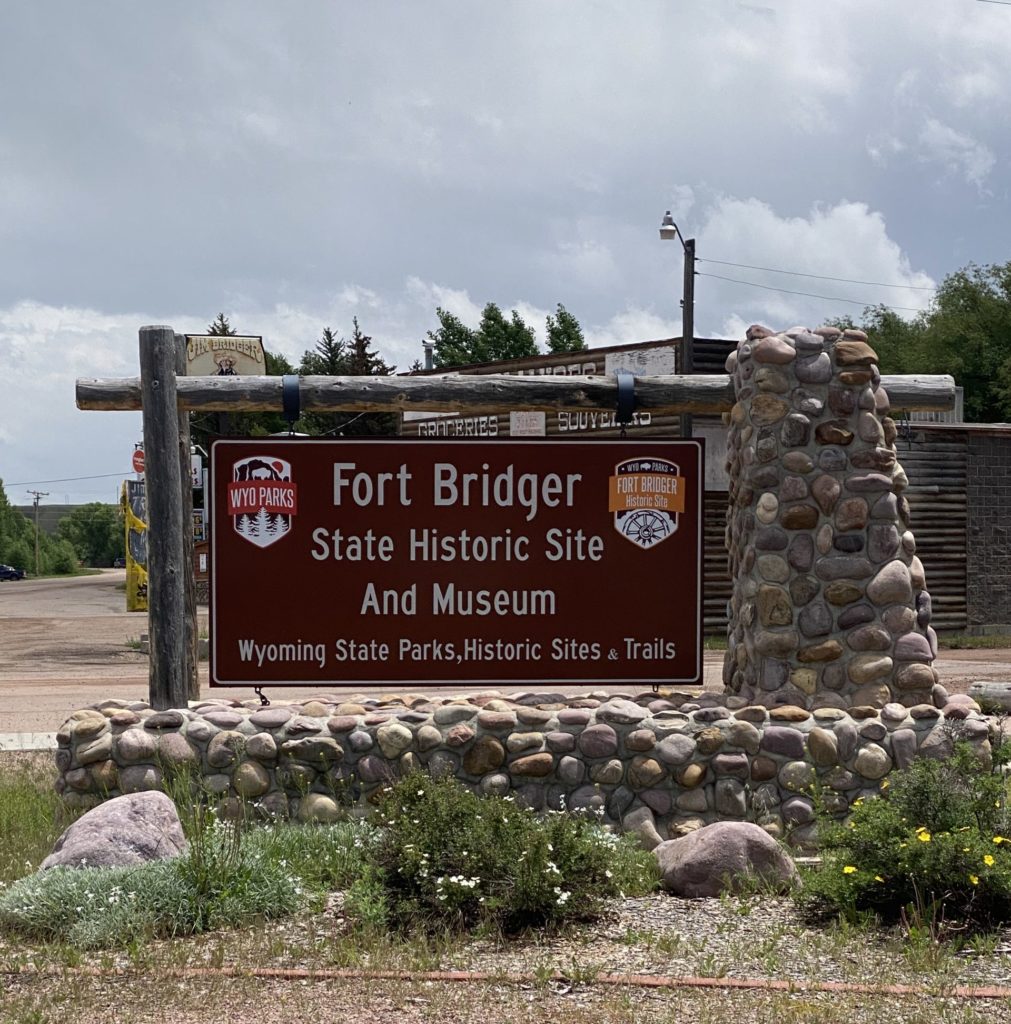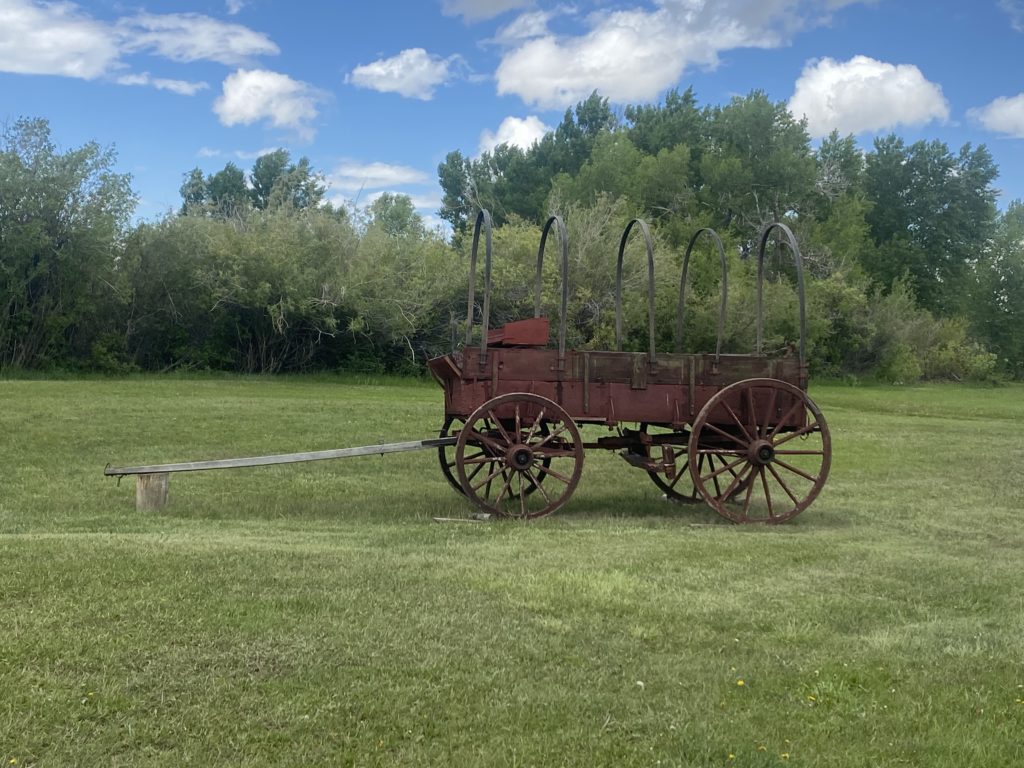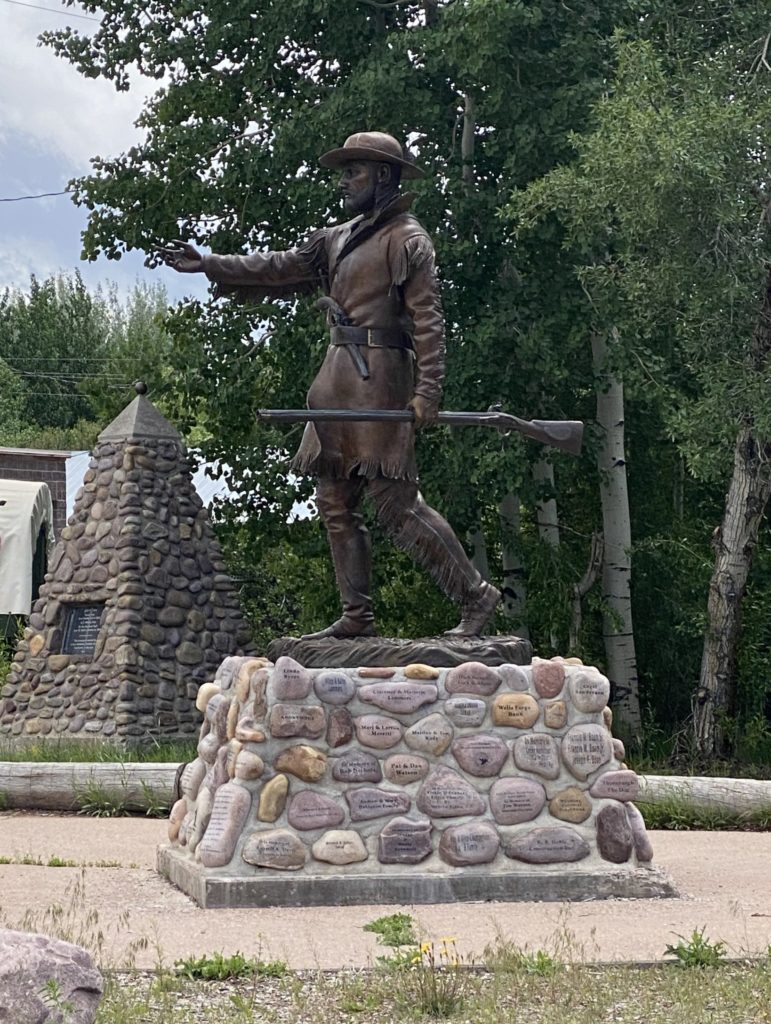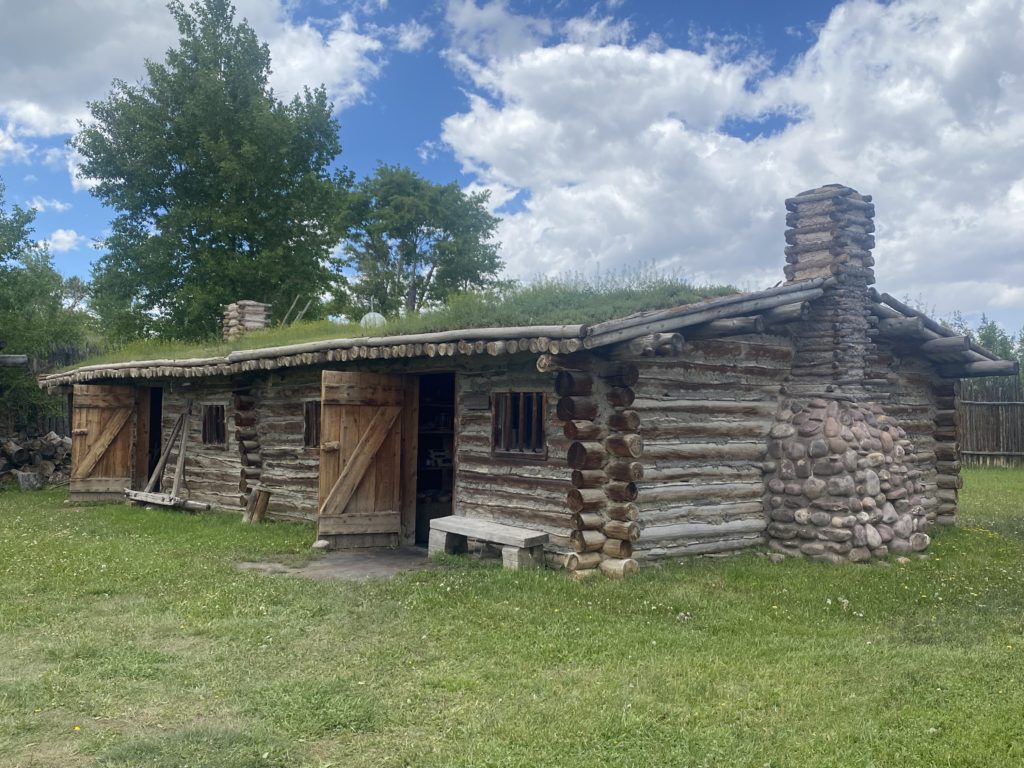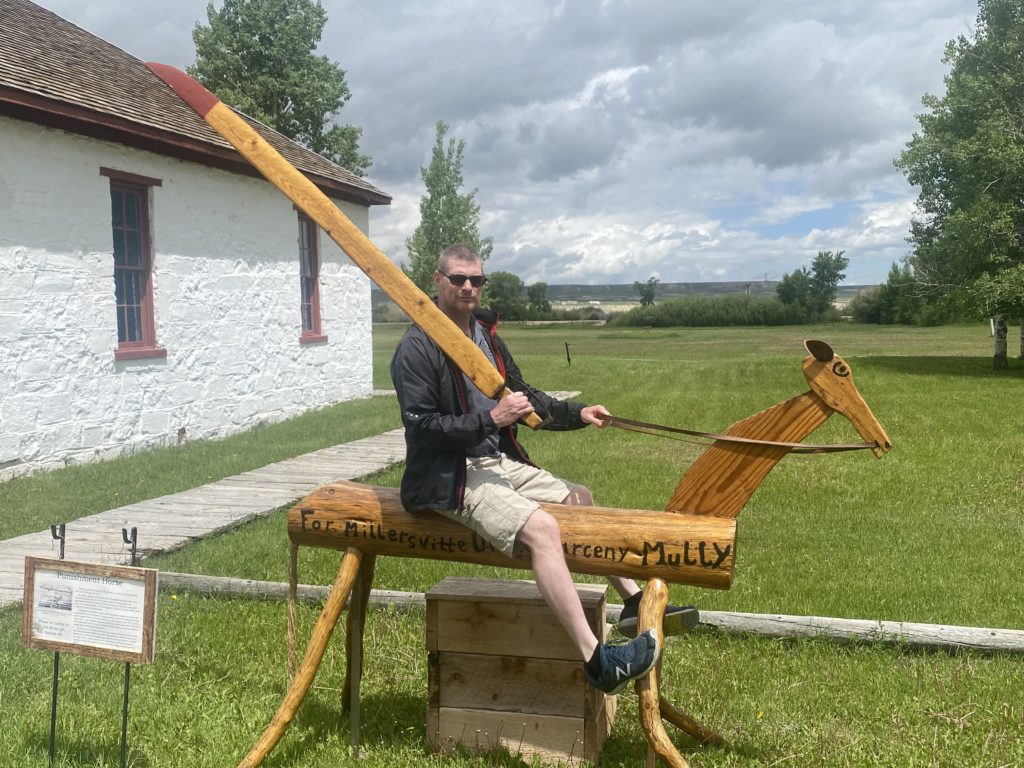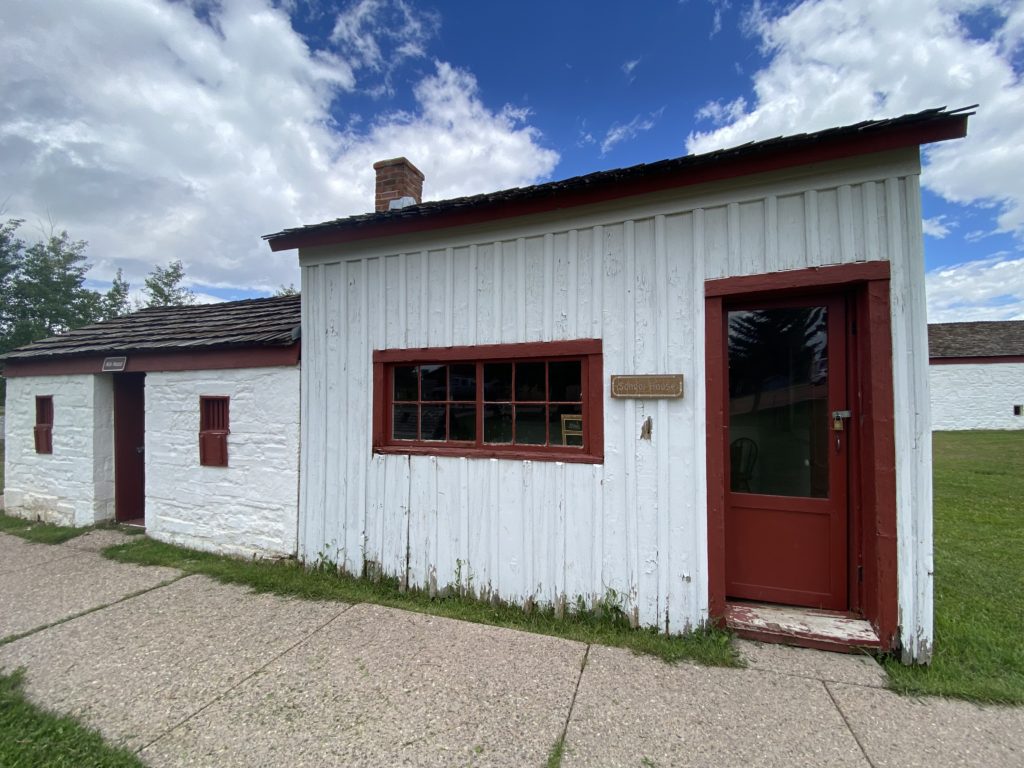Driving cross country? Are you in SW Wyoming, taking I80 to avoid the interminable flatness of Kansas? (Who hasn’t done that at least once!) You’ve been in the car a long time? I’ve got the perfect place to stop and stretch your legs for a couple of minutes or a couple of hours: Fort Bridger, an extant frontier fort.
We tend to think of forts as places we house and train the army for overseas deployment. Maybe you are familiar with the most common ones: Fort Benning, Fort Hood, Fort Bragg, Fort Lewis, Fort Jackson and others. Maybe you know many of these forts have changed their names. Yes, these bases were built in the 20th century to house and train Soldiers to go overseas.
Underneath this system of forts is an older layer; forts built for the defense of the United States. From the early 19th century through the advent of the Cold War, every major coastal city once had defensive works to fight and win if our enemies came here. Think of Fort Washington—built to control the Potomac River or Fort McHenry, known for its role in the defense of Baltimore, and the resultant Star-Spangled Banner. On the west coast, Fort Casey and others, preventing access to the Puget Sound by foreign naval forces. With the luxury of peace on our shores, we’ve forgotten them, though their vestiges are still there if you look for them.
Within this is a third layer of forts. Those forts built to protect settlers, enable Westward expansion, and protect what was perceived as our national interests at the time. One of them, Fort Leavenworth, built in eastern Kansas—once the wild frontier—still serves as a functional fort. For those that remember, think of Fort Courage in the old show “F Troop” but with real, competent, Soldiers.
Even though most of the forts are long gone, their existence is echoed in names across the landscape. Fortunately, Fort Bridger is a frontier fort that is still somewhat intact, and well worth the time to visit.
Listen to the song “Jim Bridger” by Johnny Horton as you get close. Performed in 1950s-style when everything was good and right, it’ll get you in the mood to visit because Fort Bridger was built on top of Jim Bridger’s trading camp. Bridger was one of the original frontiersmen, a trader and explorer, who—by 1843—built a trading post to support travelers along the Oregon, California, and Mormon Trails. Though it had no connection with the army, it was called Fort Bridger, consisting of simply a wooden stockade with homes for Bridger’s family, his partner, a blacksmith’s forge, and a store.
With its proximity to the territory of Utah, Fort Bridger briefly fell under control of the Church of Jesus Christ of Latter-Day Saints before the US Army arrived and established a true fort. Fort Bridger was subsequently an army post from 1857 until its closure in 1890. During that time, the Army built the small fort up into a much more substantial post, supplied by the local sutler William Carter.
Over the years, the fort hosted the signing of a treaty with local Native Americans and provided a home base to a series of horse-mounted units that protected construction of the overland railroads that ultimately ended the need for protection of wagon trains. Additionally, several geological expeditions were mounted from the fort. With the West largely secure, and Wyoming a new state, the fort was closed in 1890.
If you squint your eyes and apply a little imagination, the countryside will still look much as early occupants would have seen it as they arrived at the small town of Fort Bridger. Upon your arrival, you will see Carter’s holdings: a store, laundry, small outbuildings, and stables for the short-lived Pony Express. Money still changes hands in Carter’s store, as you pay your entrance fee and enter the historic site.
The fort is laid out like most frontier forts, in a manner that influenced many modern ones. At one end is the officers’ housing, some of which still stands. You can walk through examples of both junior officer housing, shared in a primitive “duplex” and the post commander’s house, which still shows traces of the grandeur of a senior officer’s lifestyle.
Before the houses is a large parade field, with logs laid out to mark the foundations of the long-gone enlisted barracks. The opposite side of the field holds a guardhouse, complete with a wooden “punishment horse” to be ridden by miscreant Soldiers. The far end of the parade field has the most substantial structure, once a barracks, a storehouse, and finally, a museum with stories and exhibits detailing the history of the fort, and the periods of its existence, passing through a time of pioneers, the “Mormon war” and then a period of frontier utility before becoming a historical site.
As a historical site, there are plenty of markers, including Wyoming’s first school, built for Carter’s children, but perhaps the most popular is to Thornburgh, the dog. Thornburgh was rescued from a wagon train which had been attacked by Native Americans in 1879, having been named for an army major killed in the skirmish. He went on to live at Fort Bridger for nearly a decade until his death and military burial in 1888 and is credited with several doggy successes (see his book in the museum gift shop!).
While the remains on Fort Bridger are authentic, there is a recreation of Jim Bridger’s stockade built within a couple hundred yards of the original location. It is easy to miss unless you follow the signs, so watch for it; as you get close, the smell of wood smoke will guide you in.
The Details
Fort Bridger is a hub of activity all year long. Activities are held from hiking to concerts to biking events. Other events are held during the holidays such as an Easter Egg Hunt, Flag Raising on Memorial Day, a Fourth of July celebration, a Mountain Man Rendezvous (every Labor Day weekend), a Haunted Tour in the fall, followed by a Harvest Festival, a Halloween event and finally a Victorian Christmas at the Fort. For more details, visit their website.
Fort Bridger is available to rent for weddings and special occasions.
Fort Bridger is located three miles off I80 (exit 34) in southwest Wyoming. Grounds are open year-round from sunrise to sunset, but the museum and historic building are open May through September from 9am-5pm, and from October thru April, the museum is open 9am-5pm Fri-Sun only. With advanced notice, the museum and historic buildings can be open by appointment by calling (307)870-8811.
Parking is plentiful and paths are flat and packed dirt, gravel, or boardwalk, making it easy to navigate for our friends with limited mobility.

